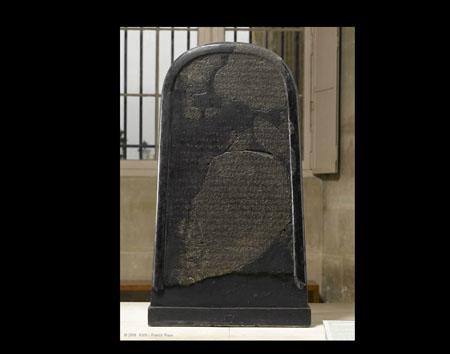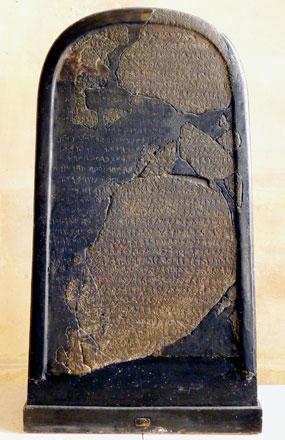You are here
French embassy forwards to Louvre request to retrieve Mesha Stele
By Muath Freij - Oct 28,2014 - Last updated at Oct 28,2014

AMMAN — The French embassy in Amman has informed the Mesha Centre for Studies and Human Rights that it has sent the Louvre Museum the request to retrieve the Mesha Stele artefact, Mesha Centre President Daifallah Hdeithat said Tuesday.
The centre had sent the embassy a number of messages asking it to contact the museum to return the Mesha Stele artefact.
“Three days ago, the embassy told us that they had contacted the museum and are waiting for its response. The embassy also apologised for the late reply, which happened because of administrative changes,” Hdeithat told The Jordan Times over the phone.
He said the centre wants this artefact brought back to the Kingdom because it is an important part of the country’s history and heritage.
“We launched a campaign to retrieve it six months ago.”
Hdeithat said the stele was taken from Theeban, the historical capital of the kingdom of Moab, in 1868 when Jordan was under Ottoman rule and moved to Jaffa by an Austrian.
“Afterwards, the Mesha Stele was moved to the Louvre Museum. It has been there for 150 years,” he added.
The inscription on the stele of King Mesha “constitutes one of the most important direct accounts of the history of the world that is related in the Bible”, according to the Louvre.
“The inscription pays tribute to the sovereign, celebrating his great construction work and victories over the kingdom of Israel during the reign of Ahab, son of Omri,” the museum says on its website.
The mention of “Israel” is its earliest known written occurrence.
The arched shape of the stele and the basalt used are “characteristic of the votive steles erected in the Levant since the Bronze Age, from Ugarit on the Syrian coast to Hazor in Galilee”, according to the Louvre.
“The complete absence of figurative representation on this particular stele is exceptional, however, as is the predominant place given to the text,” the museum says.
The identification of present-day Theeban “as the biblical site of Dibon has been confirmed by the text of the stele and American excavations over the years that have shed new light on the capital of the kingdom of Moab”, according to the museum.
Related Articles
AMMAN — The Mesha Centre for Studies and Human Rights will submit a request this week to the governor of Amman asking for permission to pick
AMMAN — French Ambassador to Jordan Caroline Dumas on Tuesday stressed the French government’s understanding of the historic importance of t
The Mesha Centre for Studies and Human Rights on Sunday delivered an official request to the French embassy in Amman for the return of the Mesha Stele artefact from the Louvre Museum to Jordan.

















